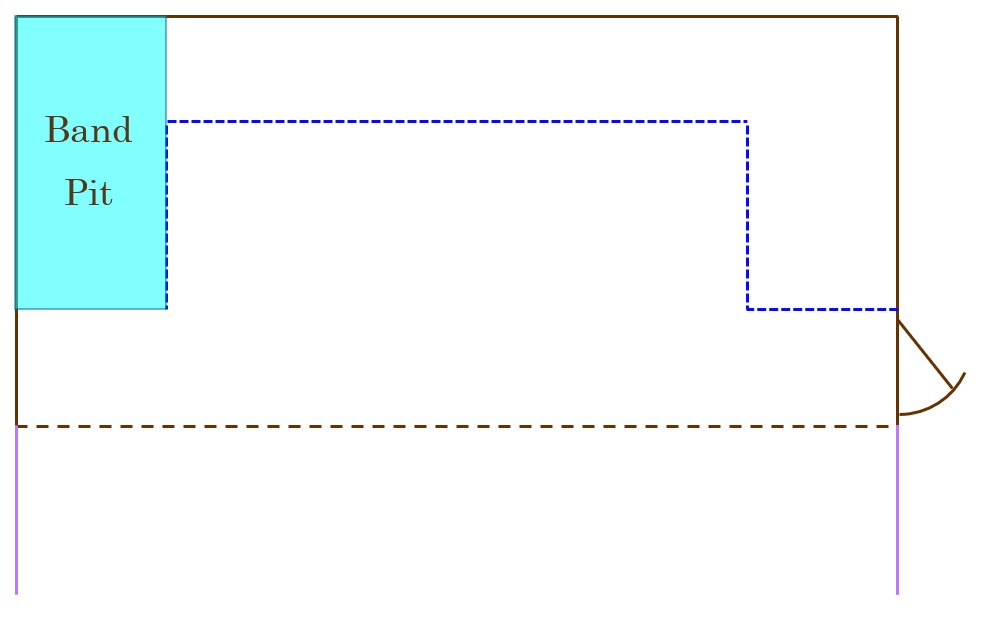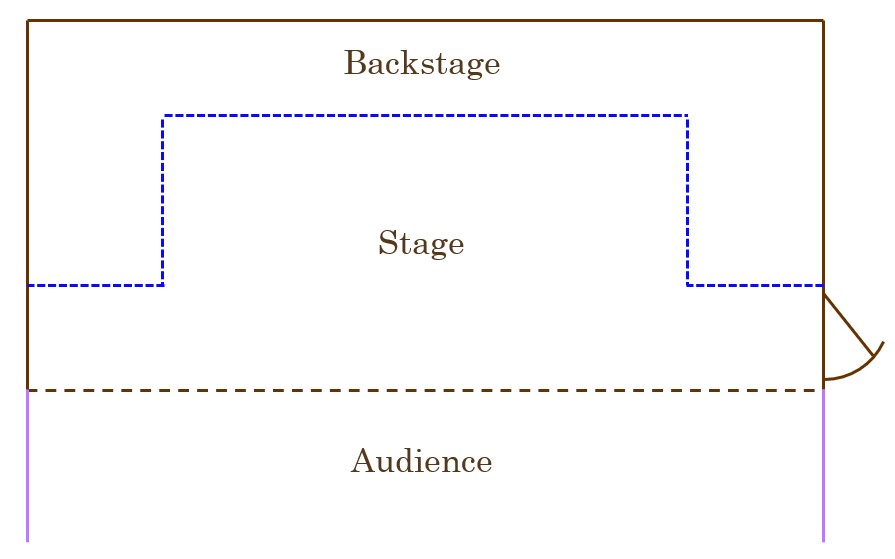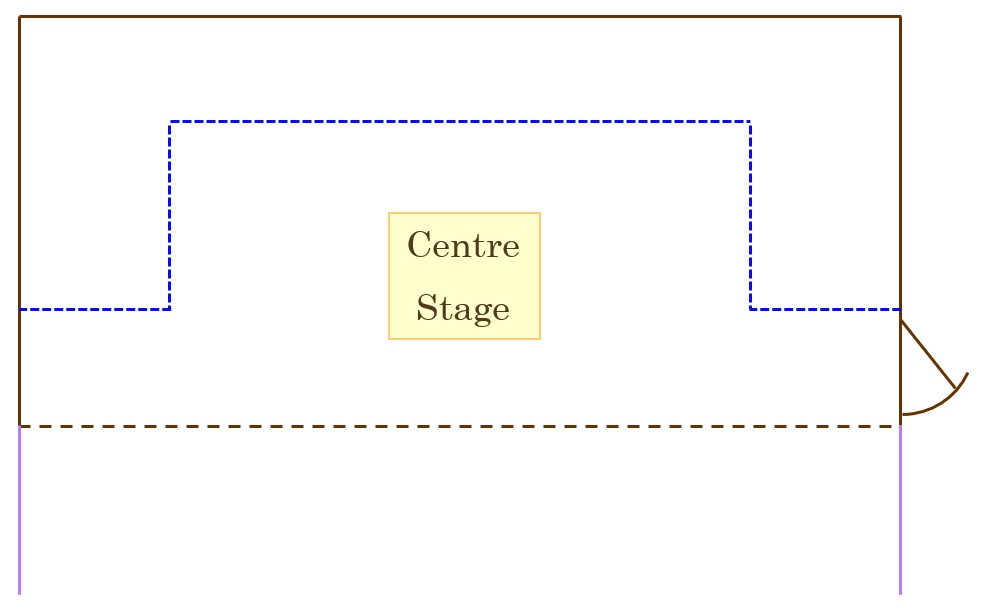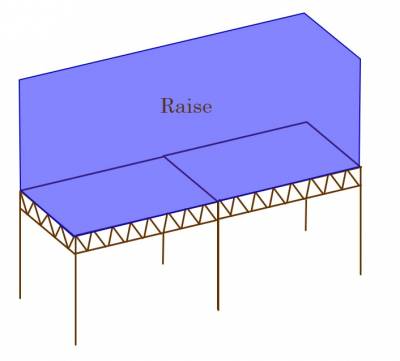User Tools
Sidebar
Table of Contents
Anatomy of a Stage
A page to explain stage directions and just where exatly we mean when we reference a section of the stage.
General Sections
Backstage
The area behind the tab.
(tab is shown in blue on the above diagram)
Stage
The area where the actors perform, typically in front of the tab and before any of the audience.
Audience
The area(s) where the audiance will sit during a show.
Stage Left / Right
Stage directions are from the perspective of somebody on the stage looking at the audience.
(Direction shown by the grey arrow below)
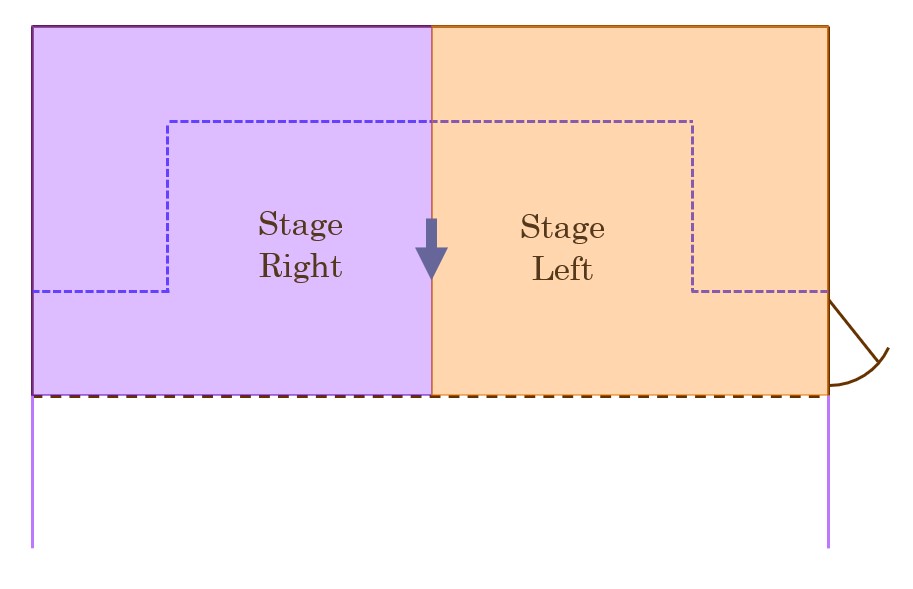
Stage Left
The left side of the stage from an actors point of view.
(Shown in orange above)
Stage Right
The right side of the stage from an actors point of view.
(Shown in purple above)
Audience Left / Right
These directions are from the perspective of somebody in the audience looking at the stage.
(Direction shown by the grey arrow below)
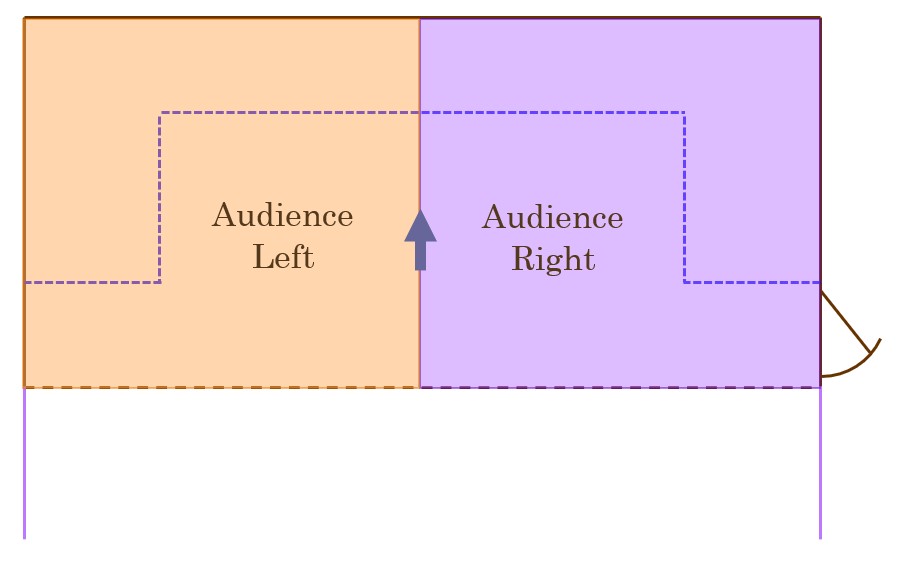
Audience Left
The right side of the stage from an actors point of view.
(Shown in orange above)
Audience Right
The left side of the stage from an actors point of view.
(Shown in purple above)
Upstage / Downstage
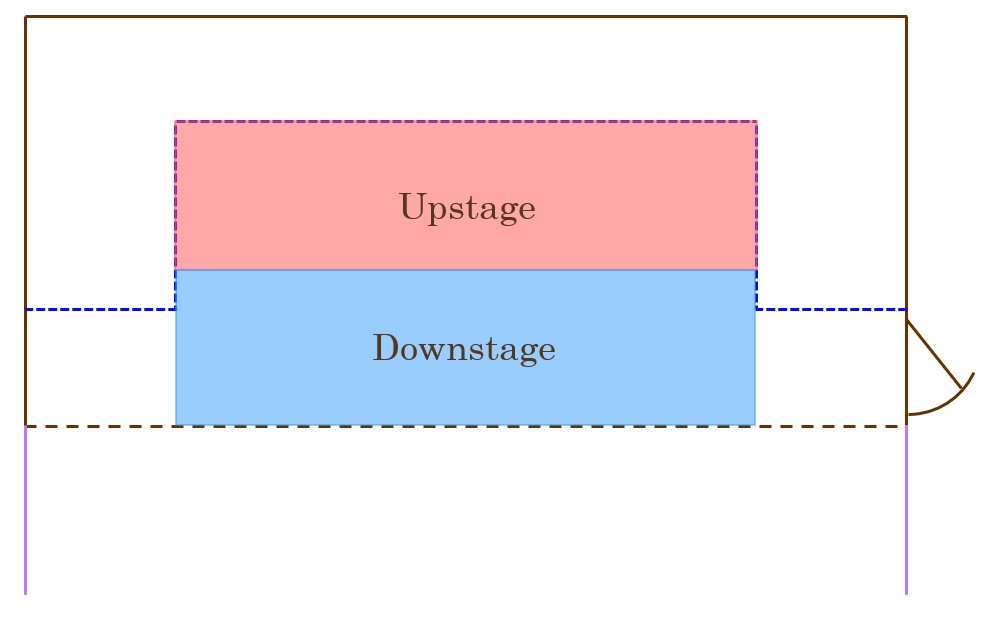 These directions are used to designate the front and back of the stage as well as movement between the two. The terms originally come from the use of raked stages where as you moved upstage you would very literally be moving up the stage.
These directions are used to designate the front and back of the stage as well as movement between the two. The terms originally come from the use of raked stages where as you moved upstage you would very literally be moving up the stage.
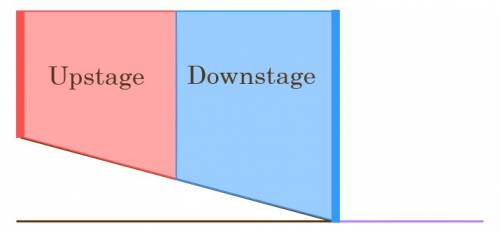
Upstage
This is the back of the stage from view of the audience. To move upstage you would move towards the bold red line in the diagram above.
(Shown in red above))
Downstage
The front of the stage. To move something downstage you would move it towards the bold blue line shown above.
(Shown in blue above))
Wings
The area behind tab to either side of the stage, frequently where entrances and exits are made by actors, can be used to store small bits of scenery if it doesn't obstruct walkways.
(Shown in green below)
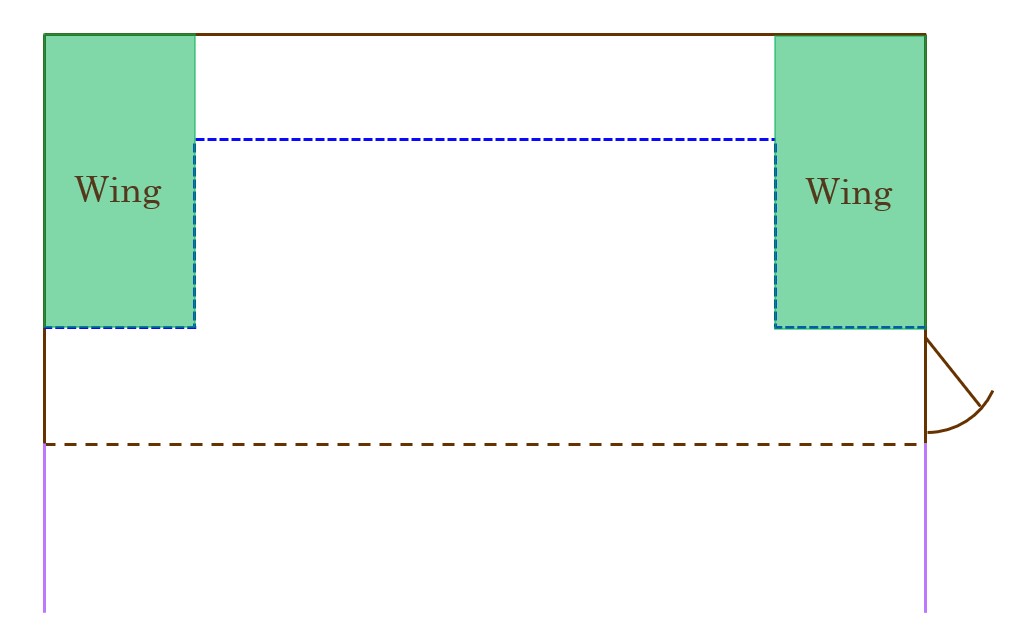
Centre Stage
Band Pit
The place where the band is. Typically in the Annex this replaces the stage right wing but this is not always the case.
(Shown in light blue below)
